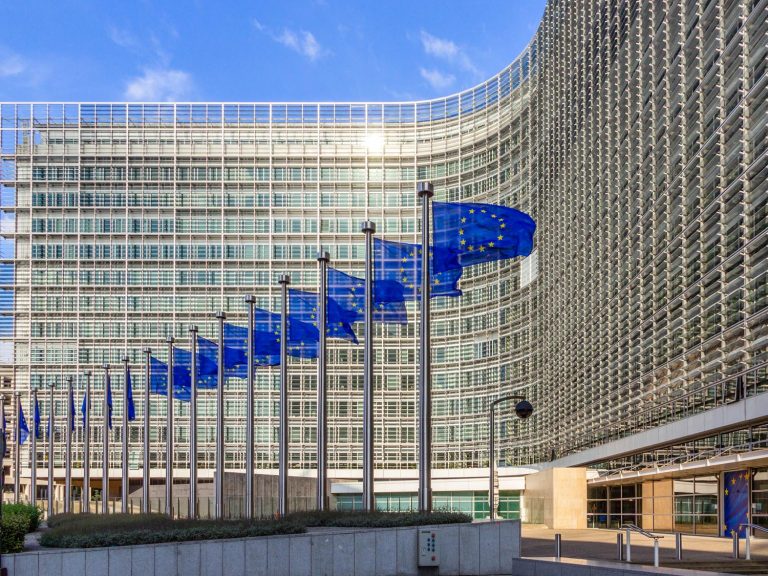
Date:
EU carbon tax on shipping is additional cost to IMO2023
Ships emit around one billion tonnes of greenhouse gases every year, or 3% of global emissions and despite IMO 2023 aiming to reduce carbon emissions from international shipping by 40% by 2030 and 70% by 2050, the EU is including maritime emissions in its emissions trading scheme (ETS).
The EU plan will include shipping emissions in the bloc’s ETS, with a three phase-in from next year and means shipowners, regardless of the flag they fly, will have to buy carbon allowances known as EU Allowance contracts (EUAs), to cover all emissions during voyages in the EU and half of those generated by international voyages that start or finish at an EU port.
Vessel operators will need to surrender EUAs in 2025 for 40% of their emissions in 2024, in 2026 for 70% of their emissions in 2025, and in 2027 for all of their emissions in 2026, based on the preliminary agreement. Full coverage will continue thereafter.
In contrast to the EU’s plan, the UK government is currently proposing only targeting domestic shipping, but there are suggestions that not including international shipping in the UK’s Emissions Trading Scheme will be in breach of its legally binding climate obligations.
Experts suggest that EU ETS carbon prices of around $95 per tonne of CO2 would not make a significant impact in closing the price gap between fossil fuels and zero-carbon fuels for shipping, with a recent report by the University College London’s (UCL) suggesting that an average carbon price of just under $200 per tonne of CO2 is needed to fully decarbonise the shipping industry by 2050, according to the analysis.
“Initially, the ETS is not going to create a hugely impactful [carbon] price, but it will generate a significant amount of revenue,” said Dr Alison Shaw, research fellow at University Maritime Advisory Services and co-author of the report.
Based on the scenarios outlined in the UMAS report, the ETS would raise $5 billion in 2030 at a price of around 50 euros ($56) per tonne of carbon. If this price increased to 103 euros per tonne of carbon ($116) by 2030, the total revenue generated from shipping would be $9 billion, according to Shaw.
The inclusion of shipping in the EU ETS will drive up operating costs for container shipping lines and those costs will inevitably be passed onto shippers, in the form of surcharges.
The first customer circulars on the EU ETS issue from the carriers were in the third quarter of 2022, when the industry was expecting that emissions trading for shipping would come as early as 2023, but due to difficult negotiations at EU level, the plan has been postponed by a year, which is a relief for everyone involved.
The first calculations on cost effects estimate the cost of pollution rights for transports from the Far East to Northern Europe is 170 euros/FEU, and 99 euros/FEU in the opposite direction.
For shipments from European North Range ports to the US East Coast the estimate is 184 euros/FEU, with the costs for reefer transports significantly higher due to the additional energy requirements at 276 euros/FEU from Northern Europe to the US East Coast.
Shipowners, unsurprisingly, strongly oppose the EU measure, which they believe puts the EU in conflict with the IMO 2023 initiative and may lead shipping lines to consider shipping hubs outside the EU to lower their costs.
They could, for example, finish voyages in the Mediterranean (or maybe even the UK) and transfer containers to smaller feeder vessels, with a lower carbon output.
Its seems unavoidable that the shipping lines will not pass on these additional charges in coming years and that additional cost will be added as a result of the ETS scheme in Europe, and by default the UK.
There will be many factors that influence the costs accrued by EU ETS and we will be doing everything we can to mitigate its impact on our customers.
We will follow carriers adoption of cleaner fuel technology, the economies of scale offered by the largest vessels, the benefits of different routing options, intermodal opportunities and anything else which may provide cost and efficiency savings.
The ‘free of charge’ Eco module, that sits in our MVT supply chain platform, monitors the energy emissions, emission costs and CO2 equivalent emissions, of our customer’s consignments, by every mode.
The module is under continuous development, with regular updates, including distance calculators, that can be adapted to measure liabilities under the new EU ETS regime. When it is rolled out.
To request a demo or discuss your requirements, please EMAIL Simon George, who can outline our ECO strategies and offset projects.
